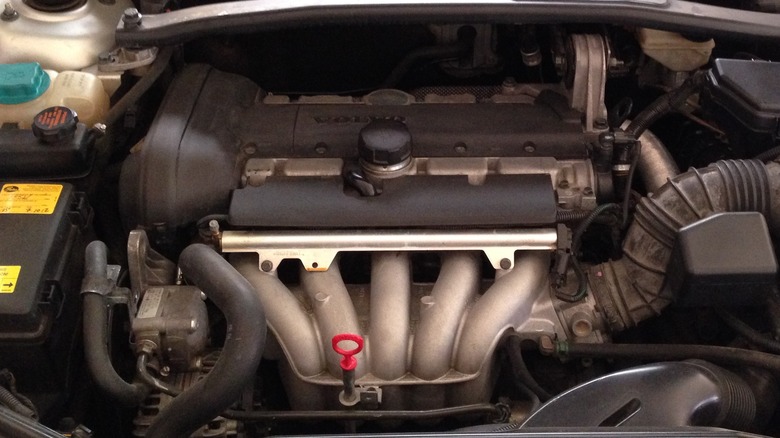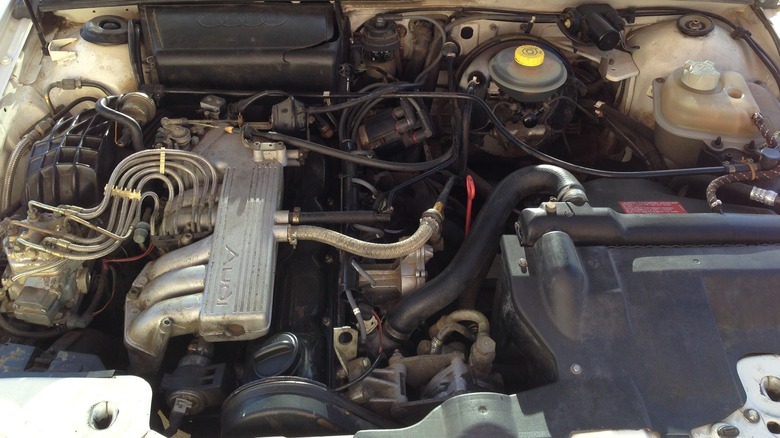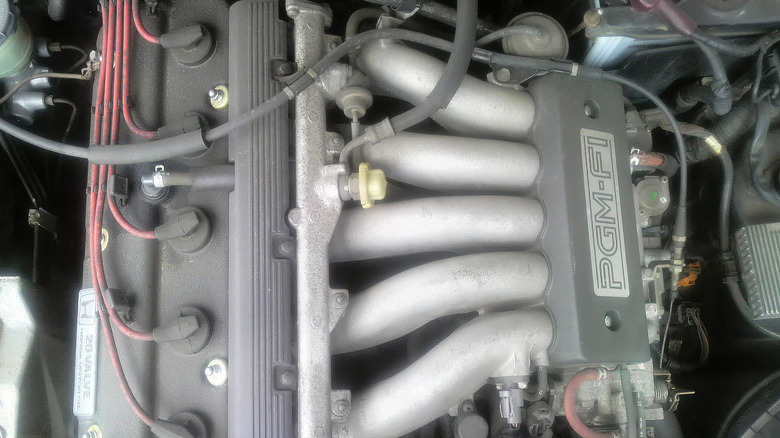Here's Why Most Car Companies Don't Build 5-Cylinder Engines
When you think of the most popular engine architecture you'll find in most cars, things like a V-8, V-6, or inline-four cylinder come to mind. Rarely do you think of an inline five-cylinder, which is a bit of a shame, because five-cylinder engines are some of the coolest-sounding engines out there.
While they were never really a massively popular option for auto manufacturers, they've definitely been on the decline. The Audi TT RS is ending production, leaving only the Audi RS3 and the non-U.S.-delivered RS Q3 as the sole proprietors of five-cylinder engines.
Though Audi's use of five-cylinder engines is one that most car enthusiasts are familiar with, it certainly isn't the only time an automaker has opted for a five count. Volvo is another manufacturer that has a rich history with five-cylinder engines. In addition, Mercedes and even Honda once had a five-pot engine in each's respective lineups. That begs the question, why aren't automakers using them as much anymore?
[Featured image by Typhoon via Wikimedia Commons | Cropped and scaled | CC BY-SA 3.0]
Modern technology killed the five-cylinder
The birth of the five-cylinder engine came with a basic need for a little more power without a lot more weight. Compromising between four-cylinder and six-cylinder inline engines gave automakers a chance to bump power up a hair without adding a ton of extra weight or drastically affecting the amount of required space needed to fit the engine. Using this architecture also allowed the integration of parts that fit on four-cylinder engines, considering the similar construction.
Though both Audi and Volvo implemented the use of turbochargers on their respective five-cylinder engines in a lot of cases, the turbocharger itself is what ultimately led to the demise of the five-cylinder engine. As engine technologies continued to develop, including material strength, power efficiency, and electronic fuel-injection tuning, the amount of power manufacturers could squeeze out of a smaller power plant kept getting bigger and bigger.
A great example of this phenomenon is the legendary Volvo 850. In turbo format, its 2.3-liter turbocharged inline five-cylinder managed 222 horsepower. Now, though, the iconic Volvo "T5" namesake is worn by a four-cylinder turbocharged engine that makes 250 horsepower.
Ultimately, for similar power output, if the opportunity to save weight — and, more importantly, materials for construction — arises, the choice becomes pretty clear. Of course, adding a fifth cylinder would still allow more power in theory, but likely not enough to warrant the extra cost and space.
[Featured image by Typhoon via Wikimedia Commons | Cropped and scaled | CC BY-SA 3.0]
The advantage of five cylinders
If more cylinders make more power, and engineers want to avoid taking up too much space, the thought of a V6 engine might come to mind. That, too, is what Audi engineers landed on when developing the five-cylinder engine. However, the V-shaped layout is inherently less stable while running than an inline engine, and it wouldn't allow the crossover use of many components from four-cylinder engines that already existed. The inline layout allows for perfect balance as the forces created by the pistons moving up and down are vertical.
These advantages are what led Mercedes to branch out into a five-cylinder diesel engine all the way back in 1974. With a desire to make more power than the four-cylinder diesel they already offered, and deciding a six-cylinder variant would be too costly and heavy, the first five-cylinder engine in a passenger car was born.
The rest is history. Unfortunately, though, it seems like we may be getting near the end of five-cylinder engines as we know it. Internal combustion engines in their own right already have one foot out the door, and modern four-cylinder powerplants seem to entirely eliminate the need for the quirky, yet enticing five-cylinder engine.
[Featured image by あら金 via Wikimedia Commons | Cropped and scaled | CC BY 3.0]


